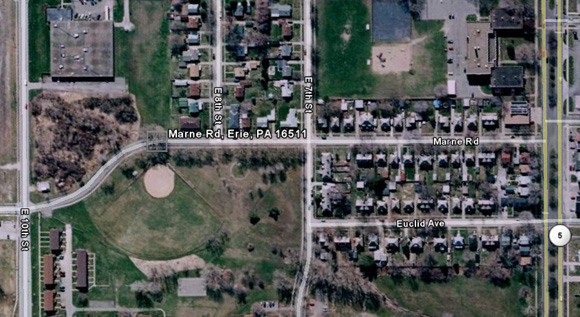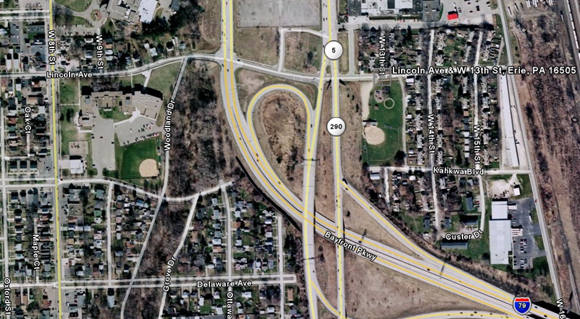Erie, PA
General Description (1919 report):
"The population of Erie was 78,000 according to the census of 1910 and is now estimated at about 110,000. It is a city of numerous industries, practically all of which turned to munition manufacturing of one kind or another during the war. The largest war industries were the General Electric Co., the American Brake Shoe Co., and the Erie Forge Co. Among them they employed some 20,000 men, which was at least three times their normal force, and because of this large increase and of numerous other additions to the working forces of industries throughout the city, insufficiency of housing in Erie became very serious.
"The United States Housing Corporation decided to relieve the situation by building houses, and for this purposes secured three sites, one on the east, one on the west, and one on the south. The total housing capacity of these three sites was 1,500 families, but at the time of the armistice construction work had been begun only on the east and west sites, which accommodated some 700 families. All three sites were outisde of the corporate boundaries, but proceedings were under way to incorporate them into the city proper."
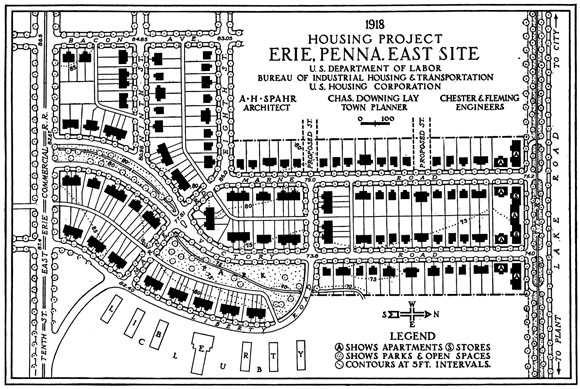
1919 excerpt describing the design of the East Site:
Area Planned: 27.26 acres. Housing planned: Detached houses, 37 families; semidetached houses, 60 families; row houses, 88 families; apartments, 38 families; total, 223 families. Housing constructed: Detached houses, 26 families; demidetached houses, 26 families; row houses, 8 families; total, 60 families.
"The east site, several miles from the main built-up section of Erie, is in the vicinity of the plant of the General Electric Co., between the plant and the city. It is a rather level district easily drained and prepared for the construction of buildings, and is a portion of an area previously acquired by this company for housing purposes...
"Comparatively few houses of the corporation's developments have brick exteriors; comparatively few have slate roof covering, and still fewer have both brick and slate. The Erie project is one of those in the latter category, the use of brick being determined upon because Erie is in the center of the brick industry of the section. To these materials one may attribute part of the good effect of this project - the color, the appearance of stability, and the lack of newness; but more important than any of these desirable qualities is the beauty of the design of each individual building. The houses have been excellently placed in relation to one another along the streets."
The Erie East Site Today
1919 excerpt describing the design of the East Site:
Area planned: 71.99 acres. Housing planned: Detached houses, 95 families; semidetached houses, 172 families; row houses, 200 families; apartment houses, 32 families, total, 499 families. Housing constructed: Detached houses, 30 families; semidetached houses, 66 families; row houses, 161 families; total, 257 families.
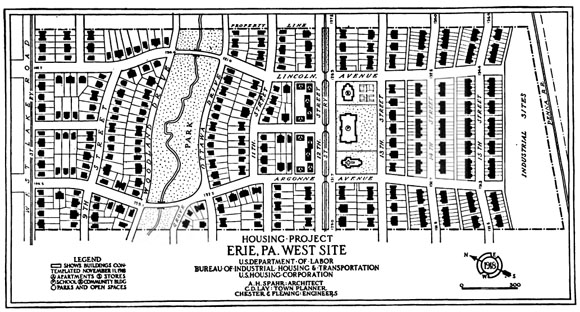
The Erie West Site Today
Erie Renderings and Photographs, 1919
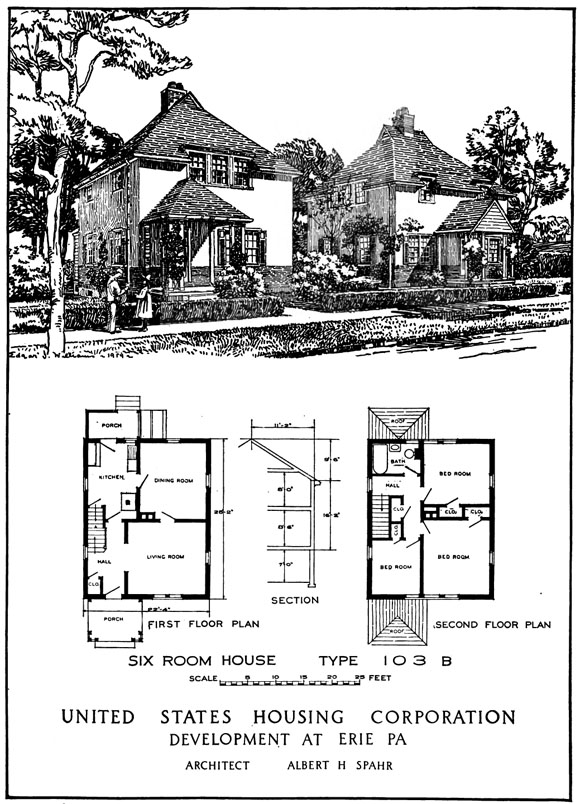
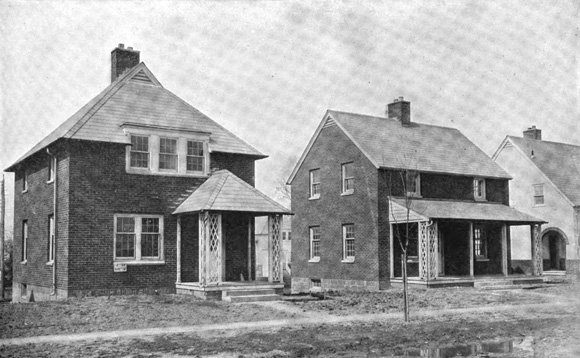
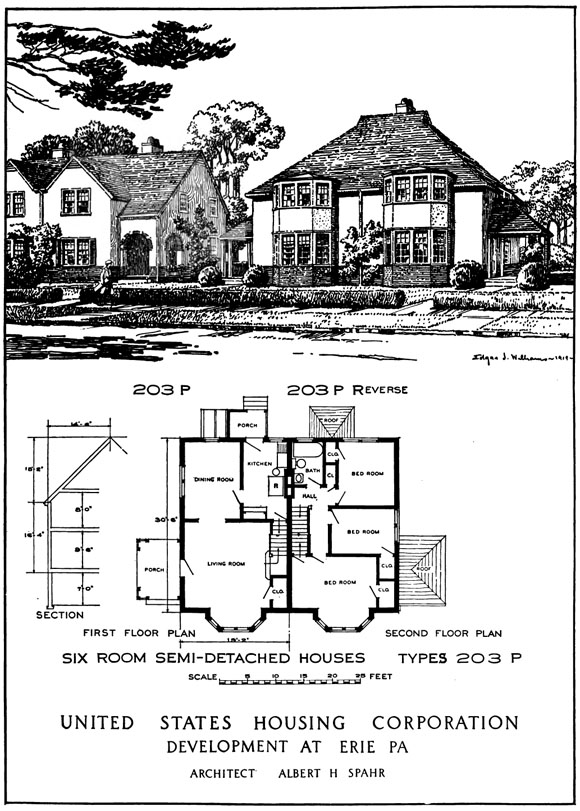
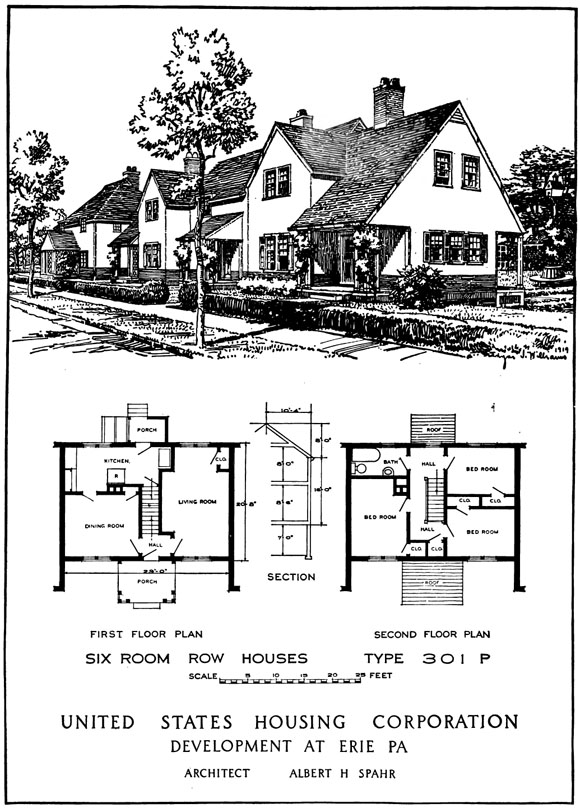
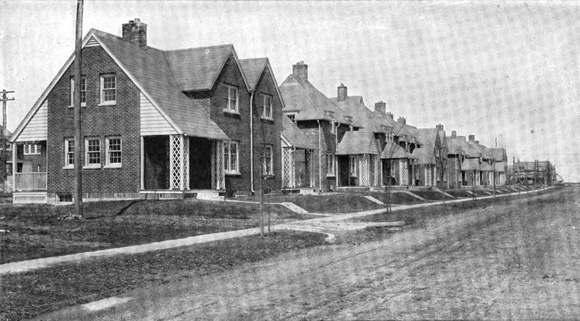
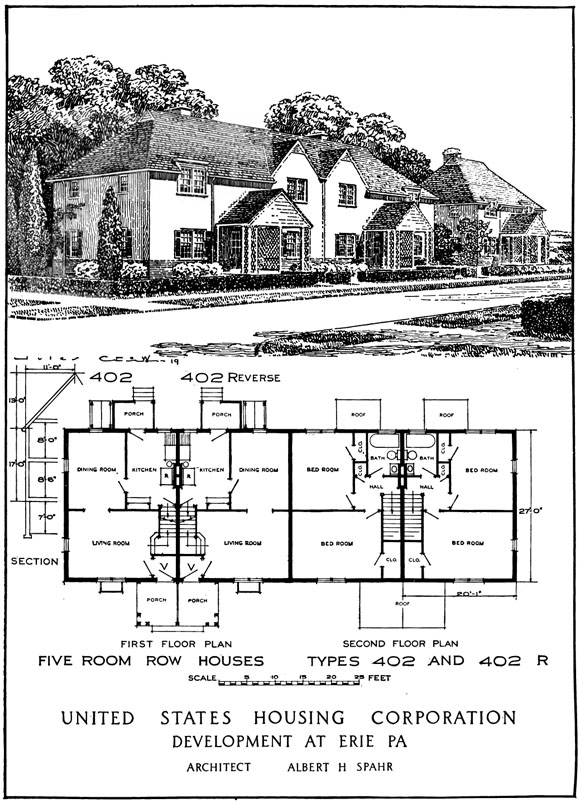
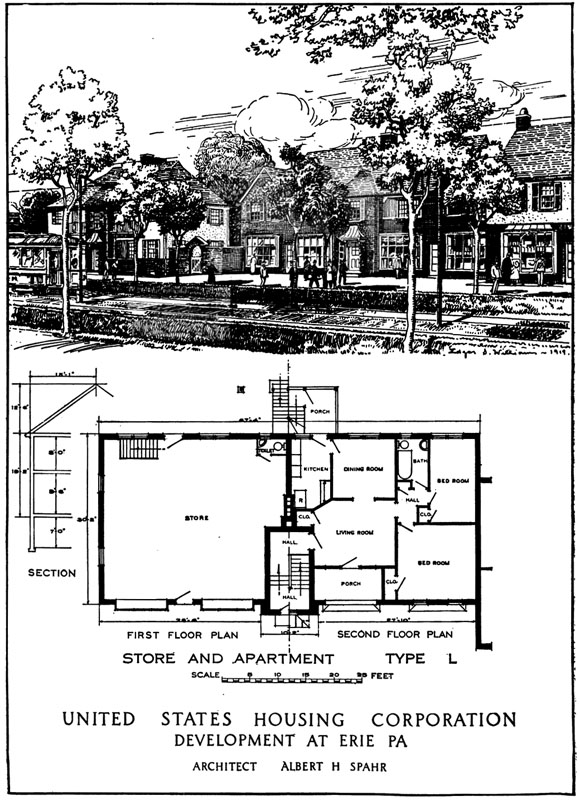
![]()
